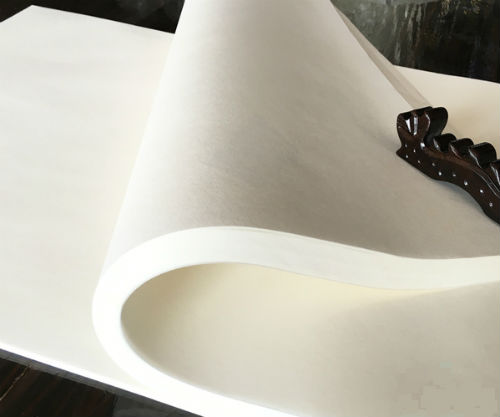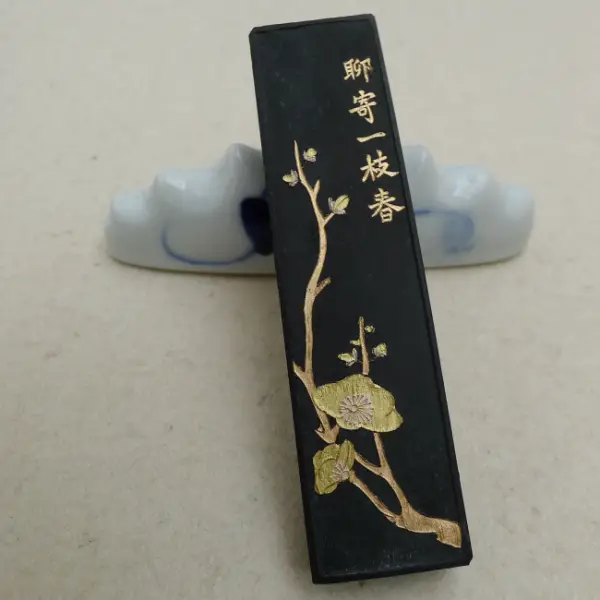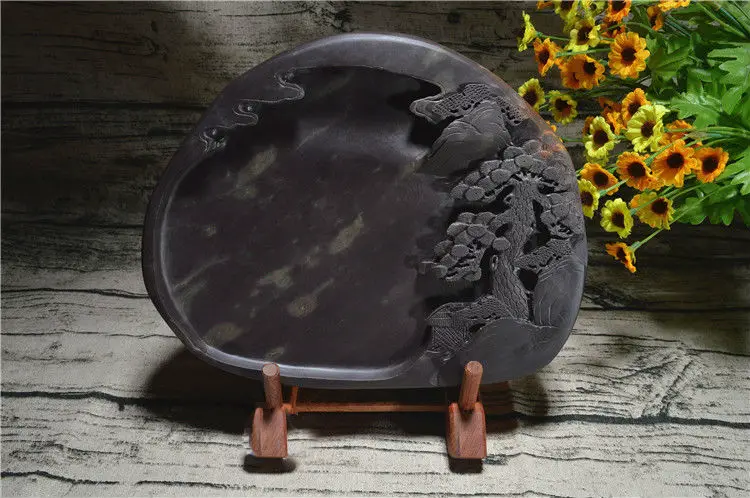After enjoying calligraphy art, artists will be relieved to discover how easy it is to get started. The 4 essential Chinese calligraphy tools are called 文房四寶 (文房四宝Wénfángsìbǎo) or literally the 4 treasures of the study room.
(note, this post contains affiliate links)

Calligraphy Brush
The Chinese brush is at least three thousand years old, the Chinese brush is called 毛筆 because the writing or painting tip is made from hair, usually wolf hair, or a combination of animal hairs. The top of the brush often has a hook for hanging storage and the tube of the brush varies in width according to the size of the brush. The head of the brush has a base from which hairs emanate into a fine tip.
Once the brush is wet, the tip should be sharply pointed, with no gaps in the brush hairs. A sign of a proper brush is one that is pointed, even, full, and resilient.
If you’re looking to get started, you can try these brushes:

Calligraphy Rice (Xuan) Paper
At least 2000 years old,Rice or Xuan paper宣紙 (宣纸 xuānzhǐ) was first created in the Tang Dynasty from the inner bark of青檀木 Qing Tan trees from 宣州 Xuan County (the name for Jing County in Anhui Province during Tang Dynasty). Supposedly spies from Europe tried to sneak into the villages of Jing county in order to learn how to make rice paper. However the trees didn’t grow as well in other climates and Europeans still could not replicate the quality.
The paper is relatively thin but resilient and its flat smooth texture and high absorbency create the perfect canvas for calligraphy. Now Xuan paper has become a more commonly used term for rice paper made even outside of Anhui province.

Ink
Discovered in the late Neolithic Age, roughly 3400 years old, Ink sticks are dried ink blocks fashioned into sticks. Inksticks are then rubbed against inkstones with water to create ink. Anhui province produces popular inksticks as well.
The most common type of ink for calligraphy is pine soot ink, which comes from pine wood soot, mixed herbs, and resin. Oil soot ink is generated from trees or vegetable oil soot mixed with resin and sometimes herbs. This shinier ink is more suited for painting.
Liquid ink in bottles is a modern form of premixed ink, originally developed by Taguchi Seiji in 1897. Calligraphy purists may shun premixed ink because it tends to bleed easier across a page. Bottled ink typically is effective for modern day convenience.
Inkstick with inkstone for purchase:

Inkstone
Over 3000 years old, the inkstone is the base with a shallow well for ink. Calligraphers add a tiny bit of water to the inkstone and grind an inkstick until ink is formed. Don’t worry, it’s not a churning butter type exercise, because the mixture turns black quite quickly.
Calligraphy is just a few steps away with these tools!


